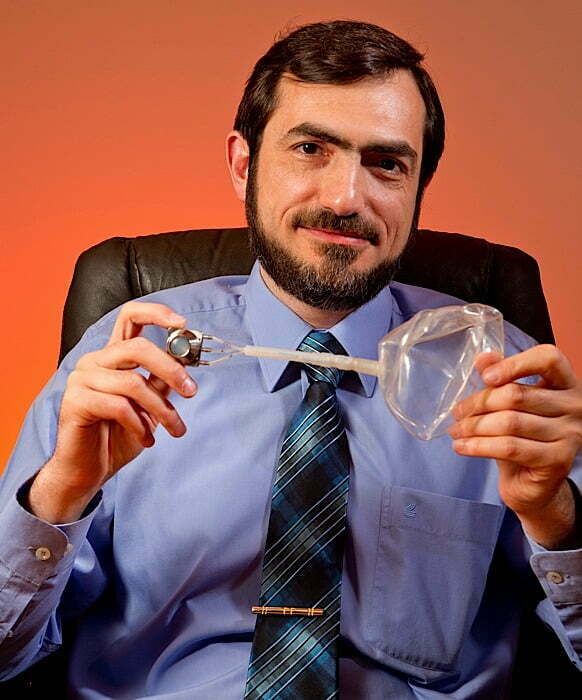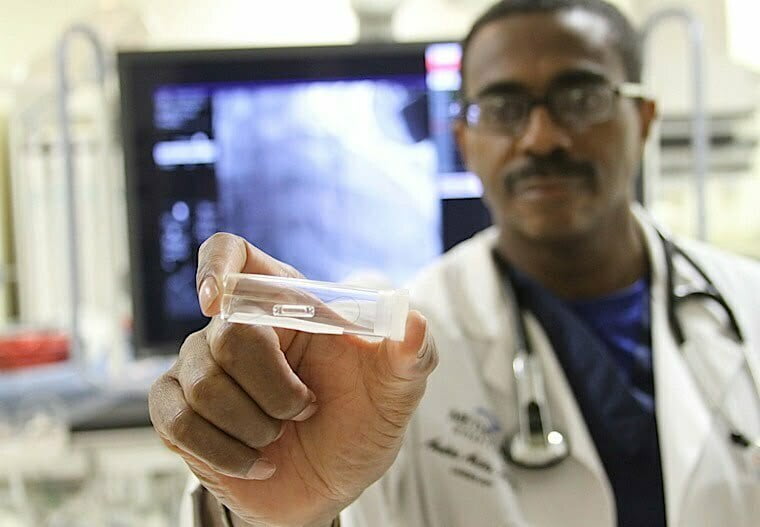Setting the standard for advances in the fields of biotechnology.
by Bob Kronemyer
In recent months, the biotechnological world in the agricultural industry has made headlines across the nation, with a specific interest for Indiana. With the recent decision in the Monsanto ruling, the focus on biotechnology not only became a force behind the public's knowledge of this rising field of science, but an eye-opening process as well.
Though the decision in the ruling focused on patent protection within the agricultural industry, the question has many times been asked, how will this decision affect other areas of biotechnology? The question remains unanswered and has left many wondering how rapidly things will progress in the future. Where the future will take this industry is unknown, but the explosion of discoveries and ideas continues, breaking through the barrier of this science, known as biotechnology.
Biotechnology is finding root here in Indiana, as exemplified by a number of startup companies and educational institutions that have embraced the rapidly growing field. Whether it is new technology aiding in the detection of bacterial strains in water, food and the human body, or an innovative medical device to help people lose weight, the Hoosier state is on the forefront. Human cells are also being studied in a unique way to further our understanding of human disease, including cancer, and new DNA testing in patients allows clinicians to assess the risk of a particular ailment, such as an abnormal heart, occurring in other family members.
Innovative Devices
A percutaneous adjustable intragastric balloon for treating obesity has been developed by Almuhannad Alfrhan, M.D., president of Medical Inventions LLC, which is located at the Purdue Technology Center of Northwest Indiana in Crown Point. The device is implanted inside the stomach and is connected to a port under the skin. “Once implanted, we can access the port through the skin to inflate the balloon and gradually increase the size of the balloon,” Dr. Alfrhan says. “This causes the patient to feel full, so he does not eat as much.”

The patient returns for a follow-up visit every two weeks, at which time the balloon is inflated an additional 100 milliliters. “Three to five treatments should be adequate for most patients. At that point, we maintain the size of the balloon without further inflation,” says Dr. Alfrhan, who practices internal medicine at both Indiana University Health La Porte Hospital and IU Health Starke Hospital in Knox. An average patient is expected to lose up to 30 percent of his excess body weight over the first six-month period.
Intragastric balloons currently in use have been found to be quite effective; however, they have a few major drawbacks due to the fact they are not adjustable. “Hence, they can be poorly tolerated initially and can lose their efficacy later on,” Dr. Alfrhan explains.
In contrast, the new device has a balloon that is increased in size, slowly over time. “This should make it better tolerated initially with the small size of the balloon, and keep it more effective later on as we continue to increase its size. We can also easily reverse the effect of our device by simply deflating the balloon,” he says. Dr. Alfrhan expects his adjustable balloon to become commercially available within the next 12 months.
Quicker Detection
F Cubed LLC is a biotech nanotechnology company that uses microfluidics to measure the DNA of an organism to detect strains of bacteria such as methicillin-resistant Staphylococcus aureus (MRSA) and salmonella. Results are obtained in one hour rather than two to four days from an outside laboratory. The device is called the NESDEP IU (NES means miracle in Hebrew, DEP stands for dielecprophoresis and IU is short for integrated unit).

“We take the cell of a bacteria, break it apart and test for the DNA of that organism,” says Bob Williams, vice president of sales and marketing for the company. Housed in the old Saint Joseph High School in South Bend, F Cubed “licensed the technology from the University of Notre Dame in 2009. In fact, this is the first technology that Notre Dame has leased,” Williams says.
The firm is divided into three separate entities: food safety, environmental testing and medical. The device is the same for all three markets, other than the biochip itself. For food, a distributor could use the device to check for various contaminates. “Now, many times the food is already consumed by the time results are received,” Williams asserts. “We are able to test in one hour.”
The first market that F Cubed will probably target, beginning in September, is water municipalities for testing of E. coli and Enterococcus (the two most common forms of bacteria found in water) in their drinking and recreational water supply. The medical version is expected to receive clearance from the Food and Drug Administration by the end of the year and should benefit hospital patients with MRSA, among other infections.
Studying Cells
The marriage of two biomedical techniques–atomic force microscopy and nuclear magnetic resonance–by researchers at Purdue University allows for the study of single cells that are isolated from the body to learn more about human disease.

assistant professor of biomedical
engineering at Purdue University
in West Lafayette, works with
postdoctoral research associate
Harris Mousoulis on a device that
will enable magnetic resonance and
nuclear magnetic resonance imaging
devices to image a single cell.
“Atomic force microscopy is a technique that allows you to basically poke and pull on cells with a small rod, whereas nuclear magnetic resonance is a technique that combines a magnetic field and radiofrequency (RF) energy to determine the chemical nature of that cell,” says Corey Neu, Ph.D., principal investigator and an assistant professor of biomedical engineering at Purdue University's Weldon School of Biomedical Engineering on the West Lafayette campus. “By combining these two techniques, we are able to trap single cells in our device, and gather information about the surface of the cell, as well as some of the chemistry going on inside the cell. We also think we can track how the cell changes when it becomes diseased, injured or more mature.”
Individual cells being studied in the lab by the researchers include cells that contribute to arthritis or breast cancer. “We can learn more about these cells with the combined techniques, rather than relying on one technique alone,” Dr. Neu says. In addition, single cells are exposed to various drugs to evaluate how they respond to treatment. The microenvironment of cells can also be changed to mimic the body as a cancer or other disease develops. “If we are successful, I believe we will potentially advance our understanding of disease and open up new avenues of treatment for those diseases.”
New Frontiers
Another exciting frontier in biotechnology is whole exome sequencing, a new diagnostic technique to assess numerous sequences of DNA in individuals through a simple blood test and at a fraction of the cost of whole genome sequencing, and next generation sequencing.

and can help spot susceptibility to genetic disorders, according to Dr. Janice Zunich of
the Indiana University School of Medicine in Gary.
“With whole exome sequencing, we are testing specific sequences of DNA called exons, which are the building blocks of the gene that are used to make proteins that are necessary for the body to function normally,” explains Janice Zunich, M.D., a clinical associate professor of medical genetics at Indiana University School of Medicine Northwest in Gary.
“However, the exons probably account for no more than 2 to 3 percent of our total DNA. But, interestingly, that small percent of our DNA which are exons is responsible for about 85 percent of our genetic diseases.”
For a child who appears normal other than having hearing loss, next generation sequencing can analyze a panel of hearing loss genes. Likewise, for the patient with a heart muscle problem, the technique alerts a clinician to a mutation in one of the genes responsible for that heart condition in the patient's family. Similarly, for a woman with breast cancer and a family history of breast cancer, a panel of genes can be tested “that have high penetrance for breast-cancer susceptibility,” Dr. Zunich says.
Within the past five years, “we have gone from being able to test for single genes–one at a time–to several genes that cause a single condition,” Dr. Zunich notes. Besides being able to calculate the chance of recurrence within a family, having a diagnosis may provide the complications associated with a particular condition and protocols to keep the individual as healthy as possible.
“An accurate diagnosis also allows for more effective treatment,” Dr. Zunich states.
Despite Dr. Zunich's appreciativeness of whole exome sequencing, the technique is a potential Pandora's box because “it can also find things you are not looking for, such as the family being predisposed to having early-onset colon cancer.”
On the other hand, Dr. Zunich observes that the time lag between “the dream and the reality in biotechnology has significantly lessened over the years. As a result, patients and consumers alike may find that what they are lacking today may be readily available to them tomorrow.”



